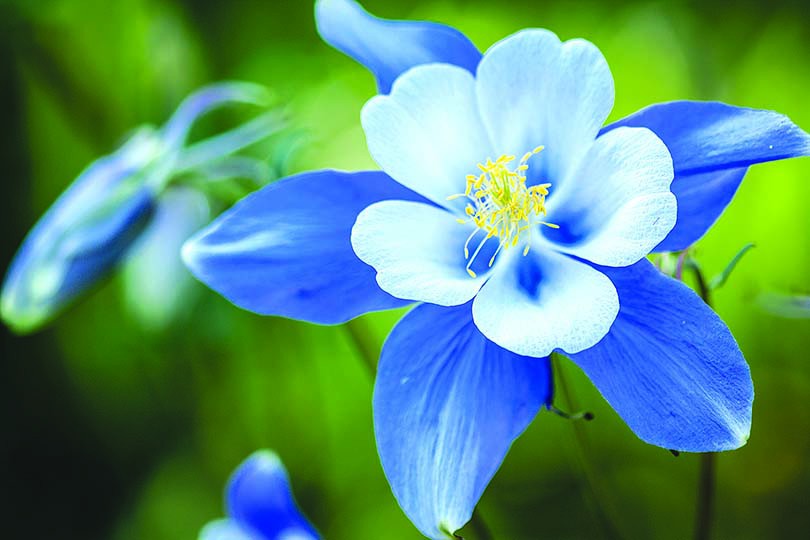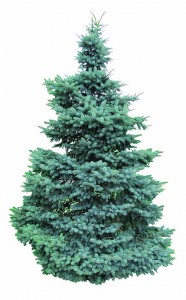Official state plants prove to be perfect for your garden
By Kristen Hannum
Consider the Colorado blue columbine, blue grama grass and Colorado blue spruce; there’s a definite blue Colorado sky hue to the official state flower, grass and tree. And each one makes for a great choice for most Colorado gardeners.
Coloradans are familiar with our state flower, the white and lavender columbine, discovered by scientist Edwin James of the 1820 Stephen Harriman Long Expedition.
Colorado schoolchildren voted the columbine to be the state flower in 1891, but evidently the legislature wasn’t listening. A Cripple Creek women’s club didn’t get any further in 1899. The legislature finally named the sweet little ranunculus Colorado’s state flower in 1925.
I thought for years that columbines were delicate and difficult to grow. It wasn’t until a more experienced gardener literally rolled her eyes at that notion and gave me a few columbines that I learned how wrong I was. They’re hardy and happy little troopers, despite their dainty looks.
My columbines’ pretty and vibrant leaves emerge early in the spring and the old-fashioned, complicated shooting star-like flowers change color as they age. Hummingbirds love columbines and are a bonus to growing them.
Columbines only live about three years, but they reseed. Many gardeners deadhead them to keep that from happening because the volunteers hybridize and may not be as hardy. I personally like volunteers and don’t always deadhead.
Blue grama grass is sometimes called eyelash grass because above its blue leaves it boasts delicate crescent tufts of seed heads on the ends of its flower stems.
Blue grama grass, a bunchgrass native to Colorado’s dry prairies, is a perennial for a Xeriscape landscape. It is one of the two major grasses of the short-grass prairie. But it grows up to 18 inches, so it’s not that short. It’s called blue grama grass because of the deep blue-green color of its leaves. Although you can mow it and blue grama grass can produce a lawn, landscapers usually use it in the dry parts of properties that aren’t mowed. Think the roughs of golf courses or in the reaches of your yard that you don’t want to water regularly. This could be part of those corners that you save for native species in order to assist pollinators.
The blue grama grass was chosen as the state grass in 1987 in order to remind tourists to this mountainous state of the importance of our grasslands. Luckily for most mountain gardeners, the Colorado State University Extension says it grows up to 9,500 feet.
The legislature named the Colorado blue spruce as our state tree in 1939. The slow-growing, long-lived conifer was first noted on the slopes of Pikes Peak in 1862.
The Colorado blue spruce grows in zones 3-7, which makes it viable everywhere in the state except above the tree line. Like the Colorado blue columbine and blue grama grass, blue spruces are native to the state and hardy here. There’s not a better choice if you’re looking for an evergreen to give a color contrast to a gray winter view.
Just as growing Colorado blue columbines has the bonus of attracting hummingbirds, growing the Colorado blue spruce has a bonus: It’s deer resistant.
Show your Colorado spirit in your landscape this year and plant one of our divine state symbols. You’ll be glad you did.


